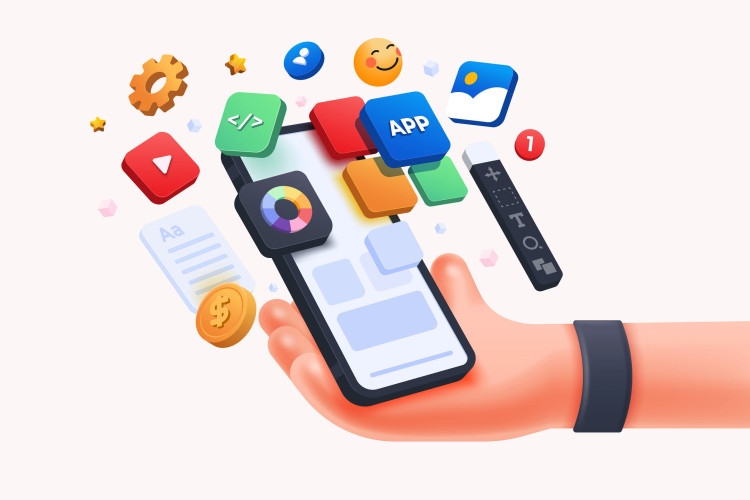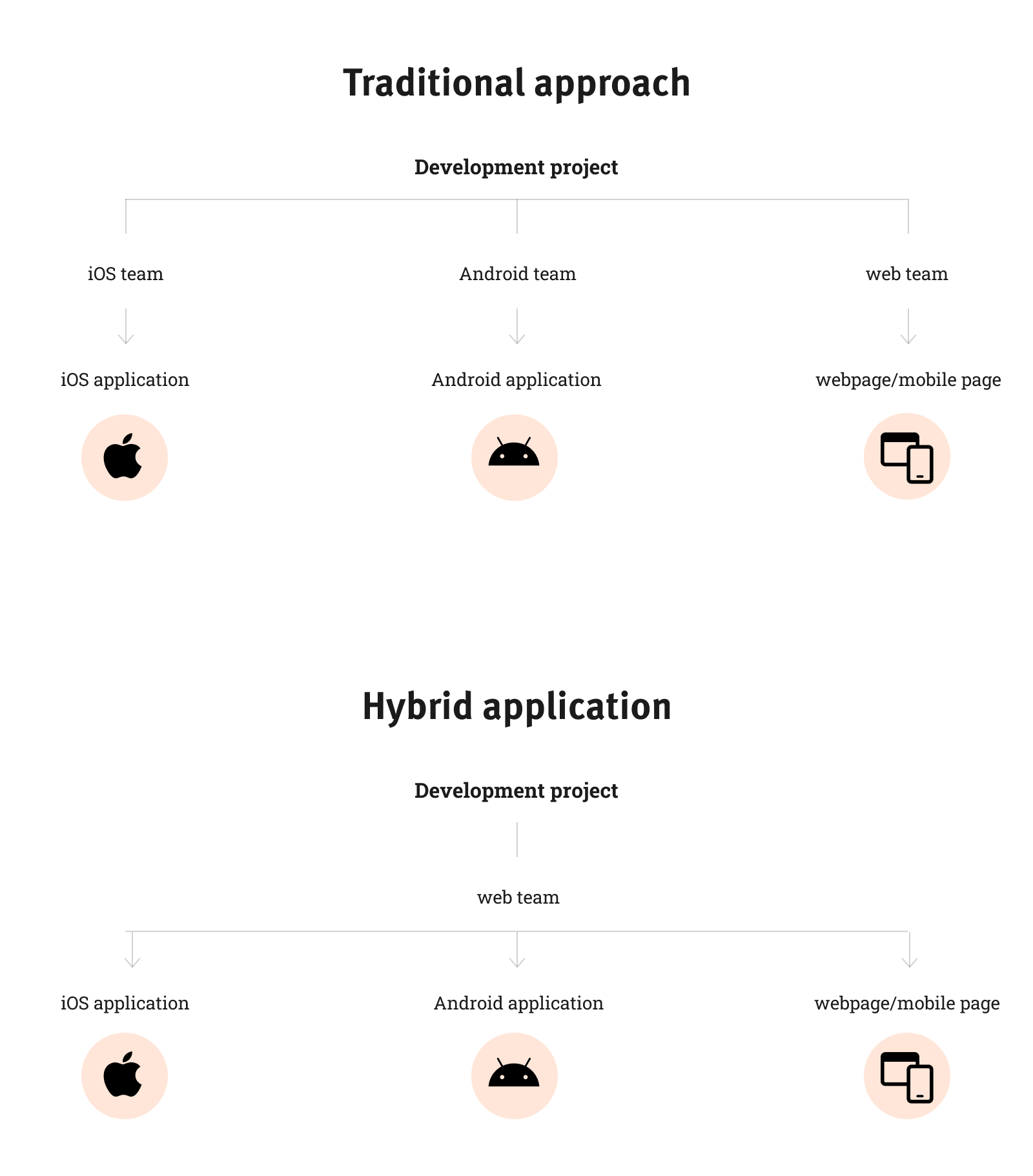Hybrid Apps: The Perfect Blend of Innovation and Simplicity


The days when mobile applications had to be developed separately for each operating system are gone. Hybrid ones are gradually replacing native applications.
As the name suggests, they are a unique blend of websites and native applications, built on the same code as websites but also capable of accessing many features of mobile devices. With hybrid apps, there is no need to develop a separate mobile experience for each platform. Everything is based on a single codebase, which makes development significantly more cost-effective.
Due to lower development and maintenance expenses, as well as the ability to function in various environments, we are witnessing a true boom in hybrid applications. Some well-known apps you might use daily are hybrid apps, showcasing their versatility and performance:
Many companies utilize hybrid technology to deliver a higher-quality experience to their users on mobile devices.
The number of providers developing interfaces and environments for creating hybrid applications is also increasing: React Native, Cordova, Ionic, NativeScript, Quasar, and similar hybrid platforms enable developers to use web code to create applications for any device.
Why even bother with a mobile application if today’s websites can be fully adapted for mobile devices? Both approaches have their advantages and disadvantages, and eventually, it all depends on your users’ expectations. If leveraging mobile device features can significantly improve their experience, it certainly makes sense to offer them a mobile application. A hybrid application brings numerous advantages, such as:
Hybrid applications directly access mobile device features such as the camera, GPS, and biometric login, thus enhancing user engagement. While navigating websites on mobile devices is somewhat limited, mobile applications offer a more user-friendly experience, allowing for gestures such as long presses and swiping.
The hybrid environment allows the app to function even without a signal, just like a native application, making the technology worthwhile in areas where there is no signal or where the signal is too weak. This is important for various field services or staff working in areas without signal, such as basements and tunnels. Think of a travel app that lets you view your itinerary offline—super convenient!
Including the application in Google Play, Apple App Store, and Huawei AppGallery provides users with assurance that the application has been developed according to security and performance standards, which increases the provider’s credibility. Both app stores enjoy high trust among users and are the first places they look for mobile solutions to their daily challenges. Users can then download a hybrid application to their devices just like a native one, with no noticeable differences.
Hybrid applications are developed using web technologies that work across web, Android, and iOS (Apple) environments. By eliminating the need for triple development, which is the biggest obstacle with native applications, there is no need to hire expensive specialists for individual native environments. Any experienced web developer can create a mobile application compatible with various devices.

A diagram illustrates the difference between the traditional approach and hybrid applications in project development.
A single codebase for all three environments results in significant savings, not only in development but also in maintenance. Updates to native applications must go through a lengthy testing process in mobile app stores (Google Play Store and Apple App Store) before the new version is approved by Google or Apple and made available to users. With hybrid applications, this process can be simplified, which is a significant advantage, especially for critical updates.
So why would anyone still use native applications? The answer lies in performance. A hybrid application communicates with a mobile device through a (user-invisible) mobile browser. This additional interface, which is absent in native mobile applications, affects speed and responsiveness. In most cases, this difference is negligible and does not impact the user experience. However, for very complex applications, it can become significant.
The final choice between the two approaches depends on the specific purpose of the application. For solutions that simultaneously calculate and interpret data from multiple sensors, a native application is usually the better choice. Typical examples of such applications include:
Video games with demanding 3D graphics, which require the application to perform numerous computational operations in real-time to achieve an optimal user experience, necessitate performance optimization that can only be completed in a native environment.
Applications in the field of augmented reality (AR) process large amounts of data obtained from cameras and sensors of connected devices that track user movements. Based on this data, they create a virtual environment in real time and display it to the user.
Fitness applications continuously collect data from various sensors (heart rate, step count, location). They run in the background and are designed to minimize battery usage. They often also enable workouts through video demonstrations and geolocation, all of which require deliberate optimization that would be difficult to achieve via a web interface.
These are the most typical examples of solutions where, due to complex algorithms and intensive computational operations, it makes sense to develop a native application for each environment separately.
And now the good news: for everything else, there are hybrid apps.
Hybrid apps are an excellent choice for businesses looking to save time and resources while reaching a broad audience. By merging the best of native and web technologies, they provide a cost-effective and efficient solution for app development. Whether you’re a startup or an established company, hybrid apps can help you deliver value to your users without compromising on quality.
Have you ever considered delighting your users with a superior mobile experience and increasing sales, but been deterred by development costs?
Now is the time to revisit those plans. Contact Creatim to explore scenarios for your mobile future together.